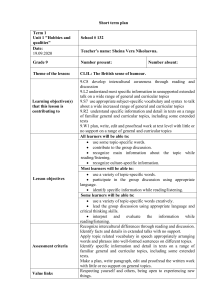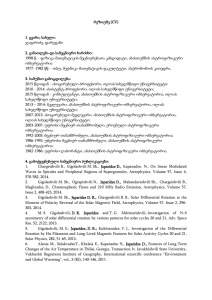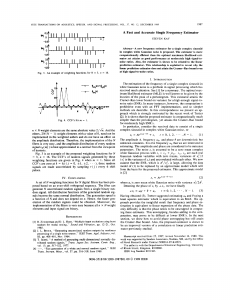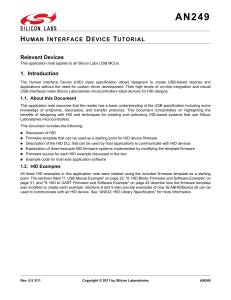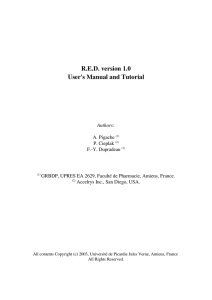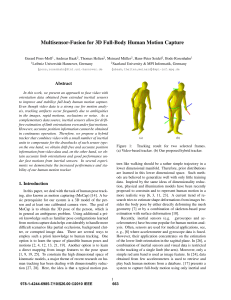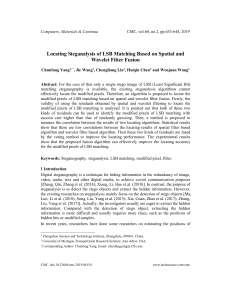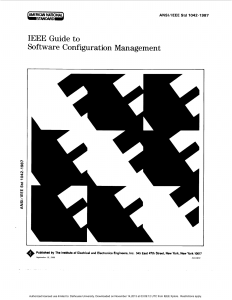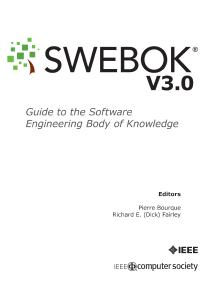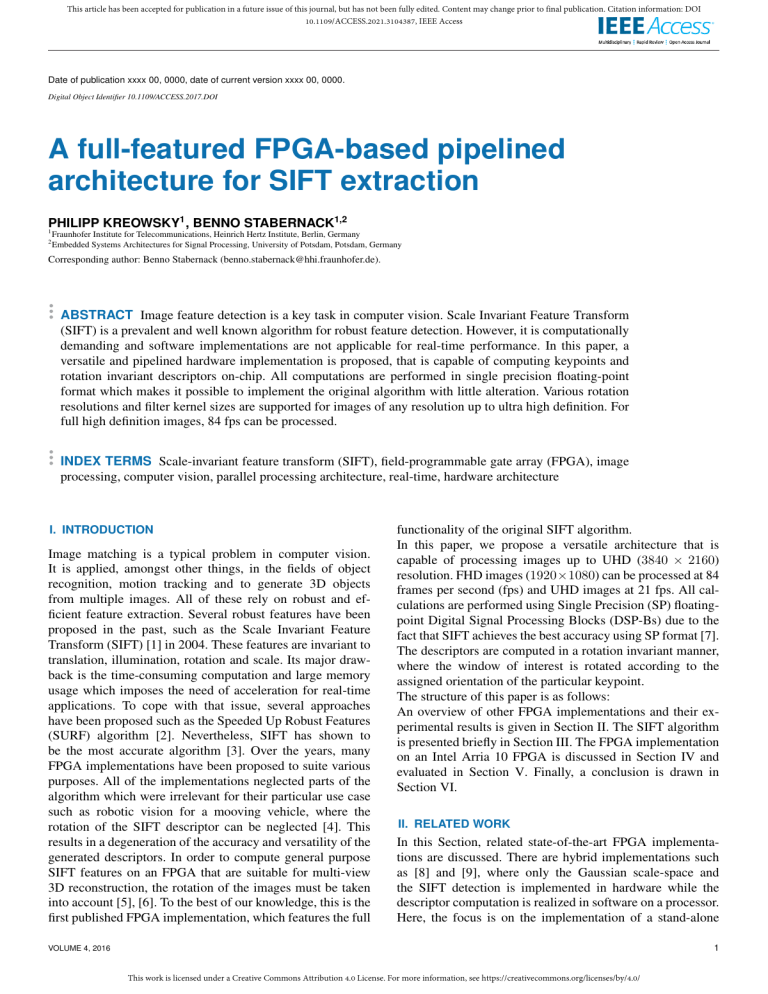
This article has been accepted for publication in a future issue of this journal, but has not been fully edited. Content may change prior to final publication. Citation information: DOI
10.1109/ACCESS.2021.3104387, IEEE Access
Date of publication xxxx 00, 0000, date of current version xxxx 00, 0000.
Digital Object Identifier 10.1109/ACCESS.2017.DOI
A full-featured FPGA-based pipelined
architecture for SIFT extraction
PHILIPP KREOWSKY1 , BENNO STABERNACK1,2
1
2
Fraunhofer Institute for Telecommunications, Heinrich Hertz Institute, Berlin, Germany
Embedded Systems Architectures for Signal Processing, University of Potsdam, Potsdam, Germany
Corresponding author: Benno Stabernack (benno.stabernack@hhi.fraunhofer.de).
ABSTRACT Image feature detection is a key task in computer vision. Scale Invariant Feature Transform
(SIFT) is a prevalent and well known algorithm for robust feature detection. However, it is computationally
demanding and software implementations are not applicable for real-time performance. In this paper, a
versatile and pipelined hardware implementation is proposed, that is capable of computing keypoints and
rotation invariant descriptors on-chip. All computations are performed in single precision floating-point
format which makes it possible to implement the original algorithm with little alteration. Various rotation
resolutions and filter kernel sizes are supported for images of any resolution up to ultra high definition. For
full high definition images, 84 fps can be processed.
INDEX TERMS Scale-invariant feature transform (SIFT), field-programmable gate array (FPGA), image
processing, computer vision, parallel processing architecture, real-time, hardware architecture
I. INTRODUCTION
Image matching is a typical problem in computer vision.
It is applied, amongst other things, in the fields of object
recognition, motion tracking and to generate 3D objects
from multiple images. All of these rely on robust and efficient feature extraction. Several robust features have been
proposed in the past, such as the Scale Invariant Feature
Transform (SIFT) [1] in 2004. These features are invariant to
translation, illumination, rotation and scale. Its major drawback is the time-consuming computation and large memory
usage which imposes the need of acceleration for real-time
applications. To cope with that issue, several approaches
have been proposed such as the Speeded Up Robust Features
(SURF) algorithm [2]. Nevertheless, SIFT has shown to
be the most accurate algorithm [3]. Over the years, many
FPGA implementations have been proposed to suite various
purposes. All of the implementations neglected parts of the
algorithm which were irrelevant for their particular use case
such as robotic vision for a mooving vehicle, where the
rotation of the SIFT descriptor can be neglected [4]. This
results in a degeneration of the accuracy and versatility of the
generated descriptors. In order to compute general purpose
SIFT features on an FPGA that are suitable for multi-view
3D reconstruction, the rotation of the images must be taken
into account [5], [6]. To the best of our knowledge, this is the
first published FPGA implementation, which features the full
functionality of the original SIFT algorithm.
In this paper, we propose a versatile architecture that is
capable of processing images up to UHD (3840 × 2160)
resolution. FHD images (1920×1080) can be processed at 84
frames per second (fps) and UHD images at 21 fps. All calculations are performed using Single Precision (SP) floatingpoint Digital Signal Processing Blocks (DSP-Bs) due to the
fact that SIFT achieves the best accuracy using SP format [7].
The descriptors are computed in a rotation invariant manner,
where the window of interest is rotated according to the
assigned orientation of the particular keypoint.
The structure of this paper is as follows:
An overview of other FPGA implementations and their experimental results is given in Section II. The SIFT algorithm
is presented briefly in Section III. The FPGA implementation
on an Intel Arria 10 FPGA is discussed in Section IV and
evaluated in Section V. Finally, a conclusion is drawn in
Section VI.
II. RELATED WORK
In this Section, related state-of-the-art FPGA implementations are discussed. There are hybrid implementations such
as [8] and [9], where only the Gaussian scale-space and
the SIFT detection is implemented in hardware while the
descriptor computation is realized in software on a processor.
Here, the focus is on the implementation of a stand-alone
1
VOLUME 4, 2016
This work is licensed under a Creative Commons Attribution 4.0 License. For more information, see https://creativecommons.org/licenses/by/4.0/
This article has been accepted for publication in a future issue of this journal, but has not been fully edited. Content may change prior to final publication. Citation information: DOI
10.1109/ACCESS.2021.3104387, IEEE Access
Author et al.: Preparation of Papers for IEEE TRANSACTIONS and JOURNALS
scale-space
img.
data
scalespace
filtering
difference
of
Gaussian
orientation
assignment
SIFT detection
low
contrast
check
edge
detection
corner
detection
SIFT descriptor
orientation
assignment
window
rotation
histogram
gradient
calculation
normalization
descriptor
Figure 1. Flow Chart of the SIFT algorithm.
design which computes keypoint locations, the orientation
assignment and the corresponding SIFT descriptors from a
given image on-chip.
Bonato et al. [10] presented one of the first stand-alone FPGA
implementations for the SIFT algorithm. The detector was
able to process images of size 320 × 240 at 30 fps. The
computation of the descriptor was implemented in a NiosII soft processor and took 11.7 ms to compute one feature.
This is a significant bottleneck in the descriptor computation.
Also, only local maxima where taken into account as possible
keypoints.
Yao et al. [11] modified the SIFT algorithm and reduced the
dimension of the descriptor vector from 128 to 72. Their
design takes 31 ms to detect features on a VGA image.
Chiu et al. [12] presented an implementation where they
used integral images in order to reduce the complexity of the
computation of the scale-space. The trigonometric functions
for the descriptor calculation used custom multi-cycle components implemented on an ASIC. The implementation can
process FHD images at 30 fps with up to 2000 features per
frame. This results in approximately 16 µs per feature. For
VGA images, they where able to compute 6000 features per
frame at 30 fps.
Zhong et al. [13] presented an FPGA implementation of the
SIFT keypoint detection for images of size 320 × 256 which
can process images with up to 100 fps. A Digital Signal Processor (DSP)-based computation of the descriptor requires
80 µs per feature. However, only low-resolution images with
at most 125 descriptors per image can be processed at the
specified framerate.
Vourvoulakis et al. [4] proposed an implementation for
robotic vision where they discarded the rotation of the descriptor window and therefore the rotation invariance. They
where able to achieve 70 fps at VGA resolution and can
compute one descriptor at every clock cycle.
Li et al. [14] presented an FPGA implementation that runs
at 50 MHz and can process VGA images at 150 fps. They
are able to compute one feature on every clock cycle. It is
not described how, or if they cope with the rotation of the
descriptor window.
The implementations discussed above can be divided into
two groups: The first one in which the calculation of the de-
scriptor is a significant bottleneck, so that the achieved frame
rates are only valid for images that have less than the given
number of keypoints per image. The second group, namely
the implementations of Vourvoulakis et al. [4] and Li et al.
[14] in which the throughput is independent of the number of
features of an image. However, the rotation of the descriptors
was not implemented in any of the implementations with high
throughput, so that the matching of the resulting descriptors
leads to satisfactory results only for small rotations.
III. OVERVIEW OF THE SIFT ALGORITHM
An in-depth description of the SIFT algorithm can be found
in [1]. Here, only a brief outline of the algorithm is given.
As shown in Figure 1, the SIFT algorithm can be subdivided
into four major computation stages to generate a set of
features from a given image. These are, namely, the scalespace, the SIFT detection, the orientation assignment and the
SIFT descriptor which are described hereinafter. The whole
procedure can be repeated for various octaves. That is: For
the next octave the input image is subsampled by taking every
second pixel in each row and column.
A. SCALE-SPACE
The scale-space L(x, y, σ) is constructed by the convolution
of an image I(x, y) with a 2D Gaussian kernel (Eq. 2) of
variable scale G2 (x, y, σ), as in (Eq. 1). For the detection of
stable keypoints in the scale-space the Difference of Gaussian
(DoG) function (Eq. 3) is evaluated.
L(x, y, σ) = G2 (x, y, σ) ∗ I(x, y)
1 −(x2 +y2 )/2σ2
G2 (x, y, σ) =
e
2πσ 2
D(x, y, σ) = L(x, y, kσ) − L(x, y, σ)
(1)
(2)
(3)
B. SIFT DETECTION
Keypoint candidates are pixels in the DoG scale-space that
are local extrema. Therefore, at least three successive DoGs
must be evaluated, requiring a minimum of four scales, which
are used here. Two further checks are performed in order to
verify the stability: Candidates at (x̂, ŷ) with low contrast
(Eq. 4) along edges (Eq. 5) are discarded. The derivatives
are estimated by taking differences of neighboring pixels.
2
VOLUME 4, 2016
This work is licensed under a Creative Commons Attribution 4.0 License. For more information, see https://creativecommons.org/licenses/by/4.0/
This article has been accepted for publication in a future issue of this journal, but has not been fully edited. Content may change prior to final publication. Citation information: DOI
10.1109/ACCESS.2021.3104387, IEEE Access
Author et al.: Preparation of Papers for IEEE TRANSACTIONS and JOURNALS
D. SIFT DESCRIPTOR
|D(x̂, ŷ)| < tsh
(4)
(r + 1)2
Tr2 (H(x̂, ŷ))
(Dxx + Dyy )2
≥
=
2
Det(H(x̂, ŷ))
Dxx Dyy − Dxy
r
(5)
C. ORIENTATION ASSIGNMENT
To achieve rotation invariance, an orientation is assigned to
each keypoint. For each pixel, gradients are calculated and
converted from cartesian- to polar coordinates, giving
m(x, y) =
(6)
p
2
(L(x + 1, y) − L(x − 1, y)) + (L(x, y + 1) − L(x, y − 1))2
L(x, y + 1) − L(x, y − 1)
ϕ(x, y) = arctan
(7)
L(x + 1, y) − L(x − 1, y)
for the magnitude m(x, y) and the orientation ϕ(x, y). In
a window around each keypoint at (x̂, ŷ), the orientation
assignment works as follows:
1) The orientations are weighted with their magnitude and
a Gaussian weighting function (Eq. 2) whose input is
the distance from the keypoint g(x− x̂, y− ŷ), to have a
weighted magnitude mH . The standard deviation is 1.5
times the standard deviation of the closest scale σ̂:
mH (x, y) = m(x, y) · g(x − x̂, y − ŷ, 1.5 · σ̂)
(8)
2) An orientation histogram with N bins covering 360◦ is
formed.
3) The highest peak in the histogram, corresponding to
the dominant direction of local gradients, is detected.
It is now the assigned orientation ϕ̂.
In order to compute the descriptor, a 16 × 16 window around
the keypoint is rotated according to the assigned orientation
ϕ̂. This window is divided into sixteen 4 × 4 subwindows,
which is shown in Figure 2b. Within each subwindow, the
magnitudes are put into an eight bin histogram according to
their orientations. Finally, these 4 · 4 · 8 = 128 values are
normalized and ordered to form the resulting descriptor.
IV. PROPOSED ARCHITECTURE
In this Section, an in-depth description of the proposed architecture is given. As the division of the algorithm suggests, it
consists of four independent components:
1) scale-space: In order to save resources, the separability
of the Gaussian kernel is exploited. The subsequent
scales are substraced, yielding the DoGs for further
processing.
2) SIFT detection:The SIFT detection, which computes
flags at each point of interest (PoI) by performing the
aforementioned operations.
3) orientation assignment:The orientation assignment,
which computes a histogram of weighted image gradients in an area around each PoI.
4) SIFT descriptor:The SIFT descriptor, which consists
of the plane rotation and the actual descriptor calculation.
An overview is given in Figure 3, where each individual
component is shaded for better recognition.
A. SCALE-SPACE
input
Data
8
Column
Buffer
8⋅S
Column
Convolution
SP
Row
Buffer
S⋅SP
Row
Convolution
output
Data
SP
Figure 4. The dataflow of the separated 2D Gaussian Filter.
The 2D Gaussian convolution can be performed as two
1D convolutions as in [13]. Here, the corresponding kernel
(Eq. 2) is a product of two 1D Gaussian functions (Eq. 9)
which are orthogonal. Therefore the convolution is split into
a column- and a rowwise convolution.
The dataflow of the separated 2D Gaussian filter is shown in
Figure 4 for a grayscale image with an eight bit resolution.
(a) Window for the orientation (b) Window
assignment
descriptor
for
the
SIFT
Figure 2. Visualization of the orientation assignment (a). The blue circle
indicates the Gaussian window. The rotated window for the SIFT descriptor
calculation is shown in (b). The keypoint location (x̂, ŷ) is marked with a red
dot.
A visualization of the 16×16 window around the keypoint,
which is rotated according to the assigned orientation ϕ̂, is
given in Figure 2a. The Gaussian window is indicated by the
overlaid blue circle.
2
2
1
e−x /2σ
G1 (x, σ) = √
2πσ 2
(9)
This drastically reduces the number of arithmetic operations required, especially for larger kernels. Only odd kernel
sizes S are supported, requiring 2 · d S2 e multiplications and
2S−2 additions per pixel. Image data is provided as unsigned
integers, therefore half of the additions are performed before
the conversion to SP format, further reducing the number
of required DSP-Bs by b S2 c. Therefore, only 2S − b S2 c − 2
3
VOLUME 4, 2016
This work is licensed under a Creative Commons Attribution 4.0 License. For more information, see https://creativecommons.org/licenses/by/4.0/
This article has been accepted for publication in a future issue of this journal, but has not been fully edited. Content may change prior to final publication. Citation information: DOI
10.1109/ACCESS.2021.3104387, IEEE Access
Author et al.: Preparation of Papers for IEEE TRANSACTIONS and JOURNALS
Data
G(0)
filter(0)
-
DoG(0)
-
G(2)
filter(2)
G(3)
filter(3)
-
DoG(1)
prewitt
mask
3x3
PB
DoG(2)
Ix
multiply
Iy
multiply
local
extremum
flag
3x3
PB
OxO
G(1)
PB
prewitt
Mask
Ix^2
Ixy
Iy^2
scale-space
filter
corner
flag
filter
SIFT detection
orientation
assignment
&
filter
SIFT descriptor
delay
Ix
orientation
assignment
φ
multiply
PB
G(1)
filter(1)
3x3
magnitude
bus
23 x 23
PB
Iy
angle
control signal
Denominator
PoI
denom
Line
(0...3)
PlaneRotator
section
(0...3,0...3)
(0...3,0...3)
...
planeData
1
(0...3/0...3)
...
(12...15/0...3)
...
(0...3/12...15)
...
(12...15/12...15)
Line
(12...15)
...
...
section
(0...3,12...15)
denom
PoI
(0...3,12...15)
serializing
...
...
SP sqrt
planeData
(12...15,0...3)
φ
Σ
SoS
section
(12...15,0...3)
denom
PoI
section
(12...15,12...15)
denom
PoI
...
planeData
Data
Ready
FIFO
empty
data
data
wrEn rdEn
DescriptorChunk
16*SP
ReadEnable
planeData
(12...15,12...15)
Figure 3. Overview of the proposed Architecture.
SP additions are required. Also the column buffer shown in
Figure 4 requires less memory because the data is converted
to 32 bit SP not before the column convolution. A Table listing the number of required arithmetic operations for different
kernel sizes is given in Table 1.
Table 1. Multiplications and additions required for a 2D Gaussian filter and a
separated 2D Gaussian filter.
orthogonal gradients, which are used to check if (Eq. 5)
holds.
-1
-1
-1
0
0
0
1
1
1
(a)
1
0
-1
1
0
-1
1
0
-1
(b)
Figure 5. The horizontal (a) and vertical (b) Prewitt Mask.
2D
conv.
Size
Mult.
two 1D
conv.
Add.
3
5
7
9
11
13
15
...
9
25
49
81
121
169
225
8
24
48
80
120
168
224
S
S2
S2 − 1
P
17
49
97
161
241
337
449
Mult.
Add.
4
6
8
10
12
14
16
4
8
12
16
20
24
28
2d S2 e
2S − 2
P
C. ORIENTATION ASSIGNMENT
8
14
20
26
32
38
44
The assigned orientation calculator computes an N bin histogram of weighted magnitudes in a quadratic window
around a keypoint. The size of the window is restricted to odd
sizes O such that the keypoint is located at its center. Here,
only windows of size O = {3, 5, 7} where evaluated. A block
diagram of the pipelined histogram architecture is given in
Figure 6. The input data is a window around a PoI containing
the magnitude and angle for each pixel. It is stored in a RAM
and provided sequentially. In order to weight each value, the
coefficients of a 2D Gaussian kernel are precomputed and
stored in an array and each magnitude is multiplied with
the corresponding coefficient in the SP multiply accumulate
DSP-B (SPMA).
The straightforward way to compute a histogram would be to
add each value to the matching bin sequentially. Therefore,
each value passes a multiplexer (MUX), is added to the array
which then passes a demultiplexer (DEMUX) and is fed back
into the adder if subsequent bins are the same. This must be
realized within a single clock cycle, which limits the clock
B. SIFT DETECTION
The three consecutive DoGs are buffered in RAM-based shift
registers (SRs) in order to buffer each 3 × 3 neighborhood
in a plane buffer (PB). Each pixel is compared to its 26
neighbors and the minimum magnitude (Eq. 4), yielding the
local extremum flag. From the central DoG, the horizontal
and vertical gradients are computed in parallel using a prewitt
mask, shown in Figure 5, as in [4]. The second order mixed
partial derivatives are approximated as multiplications of the
4
VOLUME 4, 2016
This work is licensed under a Creative Commons Attribution 4.0 License. For more information, see https://creativecommons.org/licenses/by/4.0/
This article has been accepted for publication in a future issue of this journal, but has not been fully edited. Content may change prior to final publication. Citation information: DOI
10.1109/ACCESS.2021.3104387, IEEE Access
Author et al.: Preparation of Papers for IEEE TRANSACTIONS and JOURNALS
DataReady
gaussianCoeff
control
(process)
XPos
Data
serializer
(process)
doneFlag
YPos
datum
SPMA
weightedDatum
0
REG
0
delay
delay
...
7
magArray
magArray
datum & φ
φ
1
SPADD
1
...
REG
7
magArray
delay
'0'
accumulate/IP
control
(process)
bus
bypassBins
enableAccumulate
delay
'1'
SPMA
REG
Sum
of
Squares
control signal
delay
delay
DataReady
delay
Figure 6. Block diagram of the histogram computation. The computation of the sum of squares is only used for the normalization of the descriptor.
frequency drastically.
To achieve a better performance, the in- and output of the SP
addition DSP-B (SPADD) and the histogram array is registered which leads to three different cases for the histogram
creation.
•
•
•
If subsequent bins are the same, enableAccumulate is
set and they are accumulated using the SPMA.
If the next bin but one is the same, bypassBins is set and
the result of the SPADD is fed right back as the second
summand.
For every other case, the old value from the histogram
array is the other summand and the result of the SPADD
is stored in the array.
(a) Input data
(b) data rotated by 22.5◦
(c) data rotated by 45◦
(d) data rotated by 67.5◦
D. SIFT DESCRIPTOR
In order to compute a descriptor, the central 16 × 16 pixels
of a 23 × 23 window around a PoI are rotated. The rotation
is implemented as a MUX, which can resolve a resolution of
N steps. It is implemented as a backward mapping to avoid
holes in the rotated window. A visualization thereof is given
in Figure 7 for three different rotations. A rotation resolution
of N = 16 results in steps of 22.5◦ . Due to the fact that at
maximum every other pixel can be a keypoint, a multi cycle
path constraint can be applied for the rotation to achieve a
better timing. The rotated window of size 16 × 16 is now
divided into sixteen subwindows, each one having its own
histogram computation as in Figure 6. Additionally the sum
of the squared magnitudes, required for the normalization,
is computed using an SPMA. For the normalization one
division intellectual property core (IP) per subwindow and
one square-root IP in total is utilized. One descriptor can be
processed in 28 clock cycles.
Figure 7. Visualization of the plane rotation. Input data is 23 × 23 pixel. The
size of the rotated window is 16 × 16 pixel.
The number of generated features depends on the image
content, though Lowe [1] states that a typical image of size
500x500 pixels will create about 2000 feature points. That is
approximately one feature every 125 clock cycles. With PoIs
occurring at most on every other pixel and the requirement of
the whole window to be within the image, this does not lead
to a degradation of the throughput if a FIFO is used to buffer
some potential clusters of descriptors.
5
VOLUME 4, 2016
This work is licensed under a Creative Commons Attribution 4.0 License. For more information, see https://creativecommons.org/licenses/by/4.0/
This article has been accepted for publication in a future issue of this journal, but has not been fully edited. Content may change prior to final publication. Citation information: DOI
10.1109/ACCESS.2021.3104387, IEEE Access
Author et al.: Preparation of Papers for IEEE TRANSACTIONS and JOURNALS
Figure 8. A random permutation of twenty matches from 3020 in total of an FHD image rotated by 45 degrees.
Figure 9. A random permutation of twenty matches from 7371 in total of an FHD image rotated by 90 degrees.
Table 2. Resource utilization of the final design.
Module
(@ 175 MHz)
LUTs
Register
DSPs
RAM
[Kbits]
M20ks Module
(@ 175 MHz)
LUTs
Register
DSPs
RAM
[Kbits]
M20ks
SIFT @ N = 8
SIFT detection
Gaussian Filter (7 × 7)
SIFT descriptor
orientation assignment
plane rotator
108298
6980
728
101181
10875
17953
253588
11408
959
242069
30824
22727
302
114
17
188
50
0
16925
1762
110
15162
599
0
1236
121
8
1115
160
0
SIFT @ N = 8
SIFT detection
Gaussian Filter(7 × 7)
SIFT descriptor
orientation assignment
plane rotator
109260
6980
737
102136
10876
17953
253830
11489
974
242229
30758
22994
302
114
17
188
50
0
32354
3523
221
28831
1173
0
2017
213
15
1804
195
0
SIFT @ N = 16
SIFT detection
Gaussian Filter (7 × 7)
SIFT descriptor
orientation assignment
plane rotator
142466
6987
732
135328
18262
43971
276689
11402
956
265176
47011
26275
302
114
17
188
50
0
16968
1762
110
15205
616
0
1238
121
8
1117
161
0
SIFT @ N = 16
SIFT detection
Gaussian Filter(7 × 7)
SIFT descriptor
orientation assignment
plane rotator
143428
6988
743
136277
18262
43970
276197
11482
979
264597
46874
26215
302
114
17
188
50
0
32440
3523
221
28917
1206
0
2026
213
15
1813
197
0
Device utilization
41/49%
32/34%
19%
36%
55%
Device utilization
41/49%
32/34%
19%
64%
83%
(a) For FHD images.
(b) For UHD images.
6
VOLUME 4, 2016
This work is licensed under a Creative Commons Attribution 4.0 License. For more information, see https://creativecommons.org/licenses/by/4.0/
This article has been accepted for publication in a future issue of this journal, but has not been fully edited. Content may change prior to final publication. Citation information: DOI
10.1109/ACCESS.2021.3104387, IEEE Access
Author et al.: Preparation of Papers for IEEE TRANSACTIONS and JOURNALS
Table 4. Overview of the performance of state-of-the-art implementations.
V. EVALUATION AND VERIFICATION
In this Section, the proposed architecture is evaluated in
terms of resource utilization, throughput and accuracy. For
better comparability, the resources and performances of the
other state-of-the-art implementations are provided as well.
The focus is on the accuracy, in particular for matching rotated images with various rotation resolutions N and window
sizes of the orientation assignment.
Bonato [10]
Zhong [13]
Yao [11]
Chiu [12]
Vourvoulakis [4]
Li [14]
Chiu [12]
This
Image
resolution
detection
descriptor
Full Alg.
fps
time
1/frame supported
320 × 240
320 × 256
640 × 480
640 × 480
640 × 480
640 × 480
1920 × 1080
1920 × 1080
30
100
≈ 32
30
≈ 70
150
30
84
11.7 ms
80 µs
5.5 µs
≈ 46 ns
20 ns
16 µs
161 ns
≈3
125
6000
307200
333312
2000
74057
3
A. RESOURCE UTILIZATION
The resource utilization is presented in Table 2a and 2b for
FHD and UHD images, respectively. In each Table, the SIFT
descriptor and the orientation assignment (for O = 5) is
lumped together. For the Gaussian filter, only the required
memory changes depending on the image resolution. In
fact, the number of required LUTs, registers and DSP-Bs of
the whole SIFT detection module is constant for all cases.
The resources for the descriptor are given for two rotation
resolutions of N = {8, 16} steps. Different rotation resolutions only affect the number of LUTs and registers within
the SIFT descriptor module. More precisely, required LUTs
and registers of the orientation assignment and subsequent
plane rotation module are affected by the rotation resolution.
For different image resolutions only the required memory
changes. Table 3 shows the resource utilization for the stateof-the-art implementations discussed in Section II.
Table 3. Overview of the hardware resource usages of state-of-the-art
implementations.
Image
resolution
Bonato [10]
Zhong [13]
Yao [11]
Chiu [12]
Vourvoulakis [4]
Li [14]
This
LUTs Registers DSPs RAM
[Mbits]
320 × 240
43.366
320 × 256
18,195
640 × 480
35,889
640 × 480
57,598
640 × 480
125,644
640 × 480
65,560
1920 × 1080 108,298
19.100
11,821
19,529
24,988
8,372
39,482
253,588
64
56
87
8
77
642
302
1.35
2.8
3.2
1.2
0.406
0.32
16.925
B. THROUGHPUT
The architecture is integrated in the framework presented in
[15]. Here, the image data is provided with sufficient bandwidth via PCIeDMA. Therefore the throughput is limited by
the clock frequency of the core. Hosted on an Intel Arria
10 FPGA at 175 Mhz, this results in just over 84 fps and
21 fps for FHD and UHD images, respectively. In Table 4,
the performances of the designs discussed in Section II are
presented. For better comparison: This corresponds to VGA
images that can be processed with approximately 560 fps,
which is a significant speed-up.
C. ACCURACY
The accuracy is evaluated in terms of the matching ability of
the generated features with focus on rotated images. Therefore, a variety of test images including various landscapes
and objects where evaluated. In Figure 8 and 9 two matched
images are shown with a rotation of 45 and 90 degrees,
respectively. Valid matches are connected with a blue line,
whereas wrong matches are connected with a red line. Only
a random subset of twenty matches are shown. Hence their
distribution does not corelate with the achieved matching
rate.
The proposed architecture was evaluated using various rotation resolutions from one up to 64 steps. Plots of the achieved
matching rates for images rotated by one degree increments
are given in Figure 10.
The tests where conducted with a low contrast threshold
tsh = 0.1 (Eq. 4) and edge threshold r = 10 (Eq. 5)
as in [1]. If the architecture is implemented without rotation
(N = 1), the generated features provide satisfactory matching
rates of well beyond 90 percent for images that are rotated by
less than ±20◦ . For graduately finer rotation resolutions of
two, four and eight steps, matchingrates peak at additional
rotations of ±180◦ , ±90◦ and ±45◦ , respectively.
An interesting observation is that with a minimum of eight
steps, the matching rate is above zero percent for arbitrary
rotations. The worst matching rates occur at multiples of 45◦
with an offset of 22.5◦ (e.g. 22.5◦ , 67.5◦ ,...).
For a further increased rotation resolution of N = 16 steps,
the minimum matching rate is about 50% and the effect of
different window sizes for the assigned orientation emerges.
The orientation assignment windows are quadratic with a
width of three, five and seven pixels while the standard
deviation σ = 2. The matching was performed using the
vl_ubcmatch function with the default threshold τ = 1.5
provided by the VLFeat implementation [16] of the algorithm
suggested by D. Lowe [1].
Another metric for the matching ability of the generated
features is the Recall-Precision metric [17]. Matches are
labeled positive if their euclidean distance is below the
threshold τ . Among those positive labeled matches, there
can be actual positive- as well as actual negative matches
resulting in the confusion matrix given in Table 5.
7
VOLUME 4, 2016
This work is licensed under a Creative Commons Attribution 4.0 License. For more information, see https://creativecommons.org/licenses/by/4.0/
This article has been accepted for publication in a future issue of this journal, but has not been fully edited. Content may change prior to final publication. Citation information: DOI
10.1109/ACCESS.2021.3104387, IEEE Access
Author et al.: Preparation of Papers for IEEE TRANSACTIONS and JOURNALS
N=1
matching rate [%]
100
MS=3
MS=5
MS=7
80
60
40
20
0
-180
-135
-90
-45
matching rate [%]
100
matching rate [%]
matching rate [%]
135
180
45
90
135
180
45
90
135
180
45
90
135
180
45
90
135
180
45
90
135
180
45
90
135
180
40
20
0
-180
-135
-90
-45
0
rotation [deg]
N=4
80
60
40
20
0
-180
-135
-90
-45
0
rotation [deg]
N=8
80
60
40
20
0
-180
-135
-90
-45
0
rotation [deg]
N = 16
100
matching rate [%]
90
60
100
80
60
40
20
0
-180
-135
-90
-45
0
rotation [deg]
N = 32
100
matching rate [%]
45
80
100
80
60
40
20
0
-180
-135
-90
-45
0
rotation [deg]
N = 64
100
matching rate [%]
0
rotation [deg]
N=2
80
60
40
20
0
-180
-135
-90
-45
0
rotation [deg]
Figure 10. Matching rates for various rotation resolutions for N = {1, 2, 4, 8, 16, 32, 64} and window sizes for the orientation assignment for O = {3, 5, 7}.
8
VOLUME 4, 2016
This work is licensed under a Creative Commons Attribution 4.0 License. For more information, see https://creativecommons.org/licenses/by/4.0/
This article has been accepted for publication in a future issue of this journal, but has not been fully edited. Content may change prior to final publication. Citation information: DOI
10.1109/ACCESS.2021.3104387, IEEE Access
Author et al.: Preparation of Papers for IEEE TRANSACTIONS and JOURNALS
for the worst performing rotations at the expense of the best
performing ones. As a simple measure for the overall performance of each rotation resolution, the mean- and minimal
matching rates over all 360 degrees, as shown in Figure 10,
are evaluated. The results are given in Table 6. The best
overall performance is achieved for the rotation resolution of
N = 16.
1
5°
10°
15°
30°
40°
45°
50°
60°
75°
80°
85°
90°
0.9
0.8
0.7
recall
0.6
0.5
Table 6. Mean- and minimal matching rates for various rotations resolutions
for N = 5.
0.4
0.3
N
min
mean
mean
mean−min
0.2
1
2
4
8
16
32
64
0
0
0
5.1
39.5
38.8
19.9
9.8
17.9
27.9
63.8
72.4
74.1
65.6
1
1
1
1.1
2.3
2.1
1.4
0.1
0
0
0.1
0.2
0.3
0.4
0.5
0.6
0.7
0.8
0.9
1
1-precision
Figure 11. Recall-precision plots for N = 1
The recall (Eq. 10) and the precision (Eq.
calculated as follows:
11) are
TP
(10)
TP + FN
FP
1 − Precision =
(11)
TP + FP
The following plots are obtained for increasing thresholds
τ . Figure 11 shows the recall-precision plots for nine different rotations between zero and 90 degrees for the implementation with a rotation resolution of N = 1, which in this
case corresponds to an implementation where the rotation of
the descriptor is neglected. In this case, the matching of an
image rotated by five degrees achieves recall values better
than 0.8 for a 1-Precision- or false rate less than 0.1 which
is comparable to the implementation in [4]. When neglecting
the rotation of the descriptors, the matching rate falls to zero
for larger rotations, as shown also in Figure 10.
For finer resolutions, such as N = 8 which is shown in
Figure 12a, the recall rate for images rotated by 90◦ is above
0.95. The matching of an image rotated by five degrees
dropped, resulting in a recall rate just over 0.6 for a false
rate less than 0.1. In return, images rotated by 85◦ and
45◦ achieve a similar performance. This effect extends to
rotations that are slightly off 45◦ with 40◦ and 50◦ degrees
achieving recall rates just below 0.4 for a false rate less
than 0.1. Figures 12a to 12d show, that graduately finer
rotation resolutions result in an increase of the performance
Recall =
Table 5. The confusion matrix
Predicted positive
Predicted negative
Actual positive
Actual negative
TP
FN
FP
TN
VI. CONCLUSION
In this paper, a versatile and pipelined architecture for
SIFT feature detection is presented. The efficient design of
the Gaussian scale-space offers a wide-ranging support for
various scales. It is implemented on an Intel Arria 10 FPGA,
computing SIFT keypoints and descriptors on-chip while
performing computations in SP DSP-Bs with up to 84 fps
for FHD images and 21 fps for UHD images. Normalized
descriptors can be computed in 161 ns. To the best of our
knowledge, this is the first implementation that is able to
compute rotation invariant SIFT descriptors on-chip.
References
[1] D. G. Lowe, “Distinctive image features from scale-invariant keypoints,”
International Journal of Computer Vision, vol. 60, no. 2, p. 91–110, 2004.
[2] H. Bay, A. Ess, T. Tuytelaars, and L. V. Gool, “Speeded-up robust features
(surf),” Computer Vision and Image Understanding, vol. 110, no. 3, p.
346–359, 2008.
[3] S. A. K. Tareen and Z. Saleem, “A comparative analysis of sift, surf, kaze,
akaze, orb, and brisk,” in 2018 International Conference on Computing,
Mathematics and Engineering Technologies (iCoMET), March 2018, pp.
1–10.
[4] J. Vourvoulakis, J. Kalomiros, and J. Lygouras, “Fully pipelined fpgabased architecture for real-time sift extraction,” Microprocessors and
Microsystems, vol. 40, p. 53–73, 2016.
[5] M. Imanullah, E. M. Yuniarno, and S. Sumpeno, “Sift and icp in multiview based point clouds registration for indoor and outdoor scene reconstruction,” pp. 288–293, 2019.
[6] D. C. Blumenthal-Barby and P. Eisert, “Technical section: High-resolution
depth for binocular image-based modeling,” Comput. Graph., vol. 39,
p. 89–100, Apr. 2014. [Online]. Available: https://doi.org/10.1016/j.cag.
2013.12.001
[7] T. Ko, Z. M. Charbiwala, S. Ahmadian, M. Rahimi, M. B. Srivastava,
S. Soatto, and D. Estrin, “Exploring tradeoffs in accuracy, energy and
latency of scale invariant feature transform in wireless camera networks,”
pp. 313–320, 2007.
[8] H. D. Chati, F. Muhlbauer, T. Braun, C. Bobda, and K. Berns, “Hardware/software co-design of a key point detector on fpga,” 15th Annual
IEEE Symposium on Field-Programmable Custom Computing Machines
(FCCM 2007), 2007.
9
VOLUME 4, 2016
This work is licensed under a Creative Commons Attribution 4.0 License. For more information, see https://creativecommons.org/licenses/by/4.0/
This article has been accepted for publication in a future issue of this journal, but has not been fully edited. Content may change prior to final publication. Citation information: DOI
10.1109/ACCESS.2021.3104387, IEEE Access
Author et al.: Preparation of Papers for IEEE TRANSACTIONS and JOURNALS
1
1
5°
10°
15°
30°
40°
45°
50°
60°
75°
80°
85°
90°
0.9
0.8
0.7
0.7
0.6
0.5
0.5
0.4
0.4
0.3
0.3
0.2
0.2
0.1
0.1
0
0
0.1
0.2
0.3
0.4
0.5
1-precision
0.6
0.7
0.8
0.9
0
1
(a) N = 8
1
5°
10°
15°
30°
40°
45°
50°
60°
75°
80°
85°
90°
0.8
0.7
0.3
0.2
0.2
0.1
0.1
0.4
0.5
1-precision
0.6
0.7
0.8
0.9
0.5
1-precision
0.6
0.7
0.8
0.9
1
1
(b) N = 16
5°
10°
15°
30°
40°
45°
50°
60°
75°
80°
85°
90°
0.5
0.3
0.3
0.4
0.6
0.4
0.2
0.3
0.7
0.4
0.1
0.2
0.8
0.5
0
0.1
0.9
recall
0.6
0
0
1
0.9
recall
0.8
recall
recall
0.6
5°
10°
15°
30°
40°
45°
50°
60°
75°
80°
85°
90°
0.9
0
0
0.1
0.2
0.3
(c) N = 32
0.4
0.5
1-precision
0.6
0.7
0.8
0.9
1
(d) N = 64
Figure 12. Recall-precision plots for various rotation resolutions.
[9] L. Chang and J. Hernández-Palancar, “A hardware architecture for sift
candidate keypoints detection,” Progress in Pattern Recognition, Image
Analysis, Computer Vision, and Applications Lecture Notes in Computer
Science, p. 95–102, 2009.
[10] V. Bonato, E. Marques, and G. A. Constantinides, “A parallel hardware
architecture for scale and rotation invariant feature detection,” IEEE Transactions on Circuits and Systems for Video Technology, vol. 18, no. 12, p.
1703–1712, 2008.
[11] L. Yao, H. Feng, Y. Zhu, Z. Jiang, D. Zhao, and W. Feng, “An architecture
of optimised sift feature detection for an fpga implementation of an
image matcher,” 2009 International Conference on Field-Programmable
Technology, 2009.
[12] L.-C. Chiu, T.-S. Chang, J.-Y. Chen, and N. Y.-C. Chang, “Fast sift design
for real-time visual feature extraction,” IEEE Transactions on Image
Processing, vol. 22, no. 8, p. 3158–3167, 2013.
[13] S. Zhong, J. Wang, L. Yan, L. Kang, and Z. Cao, “A real-time embedded
architecture for sift,” Journal of Systems Architecture, vol. 59, no. 1, p.
16–29, 2013.
[14] S.-A. Li, W.-Y. Wang, W.-Z. Pan, C.-C. J. Hsu, and C.-K. Lu, “Fpga-based
hardware design for scale-invariant feature transform,” IEEE Access,
vol. 6, p. 43850–43864, 2018.
[15] F. Steinert, P. Kreowsky, E. L. Wisotzky, C. Unger, and B. Stabernack, “A
hardware/software framework for the integration of fpga-based accelerators into cloud computing infrastructures,” pp. 23–28, 2020.
[16] A. Vedaldi and B. Fulkerson, “VLFeat: An open and portable library of
computer vision algorithms,” http://www.vlfeat.org/, 2008.
[17] J. Davis and M. Goadrich, “The relationship between precision-recall and
roc curves,” Proceedings of the 23rd International Conference on Machine
Learning, ACM, vol. 06, 06 2006.
10
VOLUME 4, 2016
This work is licensed under a Creative Commons Attribution 4.0 License. For more information, see https://creativecommons.org/licenses/by/4.0/
This article has been accepted for publication in a future issue of this journal, but has not been fully edited. Content may change prior to final publication. Citation information: DOI
10.1109/ACCESS.2021.3104387, IEEE Access
Author et al.: Preparation of Papers for IEEE TRANSACTIONS and JOURNALS
PHILIPP KREOWSKY received his B.Sc. degree
in engineering science in 2017 and his M.Sc. degree in electrical engineering in 2020 from Technical University of Berlin, Germany. From 2016
to 2020 he was a student assistant at the embedded
systems group of the image processing department
of the Fraunhofer Institute for Telecommunications — Heinrich-Hertz-Institute (HHI), Berlin,
Germany. He is currently a research assistant at
the same department. His current interests include
VLSI architectures for computer-vision and machine learning applications.
BENNO STABERNACK received the Diploma
and Dr.-Ing. degrees in electrical engineering from
the Technical University of Berlin, Germany in
1996 and 2004, respectively. In 1996 he joined the
Fraunhofer Institute for Telecommunications —
Heinrich-Hertz-Institute (HHI), Berlin, Germany,
where as the head of the embedded systems group
of the image processing department, he is currently responsible for research projects focused on
hardware and software architectures for image and
video processing algorithms. Since summer 2005 he is giving a lectures
on the design of application specific processors at the Technical University
of Berlin. Since October 2016 he holds the chair of “Embedded Systems
Architectures for Signal Processing” at the University of Potsdam as a
joint appointment with the Fraunhofer Institute for Telecommunications
— Heinrich-Hertz-Institute (HHI), Berlin, Germany,. His current research
interests include VLSI architectures for video signal processing, machine
learning, application specific processor architectures for embedded media
signal processing and System-on-Chip (SOC) design. He has been engaged
in several national, international and European research projects as well in
the standardization process of ITU H.266 video coding standard.
11
VOLUME 4, 2016
This work is licensed under a Creative Commons Attribution 4.0 License. For more information, see https://creativecommons.org/licenses/by/4.0/
